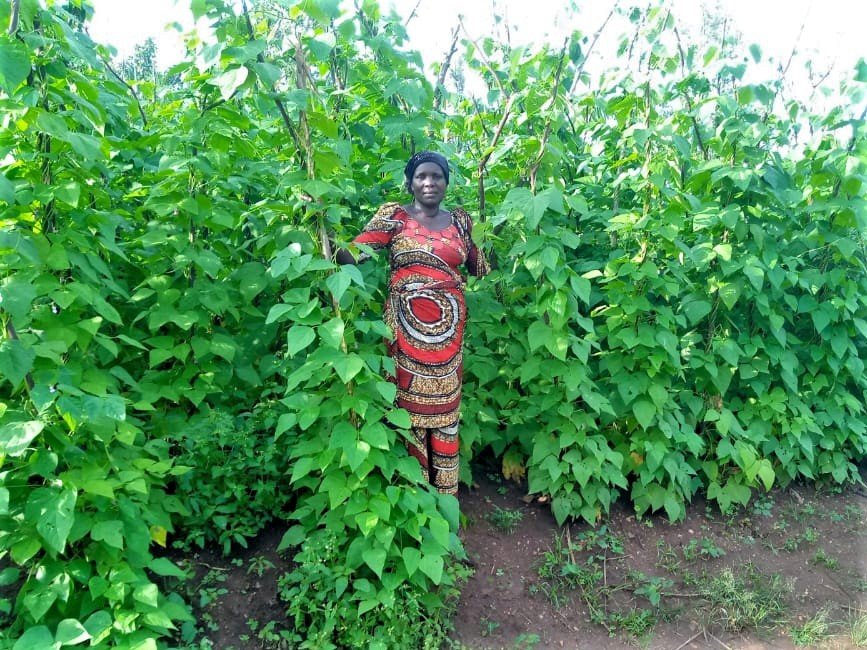MicroStory: The Social Impact of the FCAP
Anne stands in front of her bean field that she fertilized with manure from her cooperative’s FCAP project.
One of the most compelling aspects of the FCAP (facilitated collective action process), Spark’s unique approach to community-led development, is its robust impact beyond livelihoods on the social dynamics of communities. Nowhere is this more apparent than in Burundi.
For the last five years, Spark has worked with FVS-Amie des Enfants, a local civil society organization in Burundi, to implement the FCAP. After strong results the first several years, more recently, the two organizations embarked on a new pilot project that uses cooperative groups, composed of representatives from different community savings groups, to facilitate the FCAP in new communities. The hope is that these cooperatives will create a space for communities to hold each other accountable and learn from one another.
Anne is a member of the Dushigikire Abana cooperative in Bujumbura province. Her cooperative first began meeting in early 2021 and quickly identified food insecurity as their most pressing issue. They chose to implement a cow rearing project. Her cooperative purchased young cows with their microgrant, using the manure the animals produced as fertilizer to ramp up crop production in the near-term while they fattened the cows to eventually sell.
It is working: the yield from their crops has grown dramatically, and they now grow beans, corn, and other vegetables.
“These are my beans,” Anne says, as she points to am impressive field of tall green plants behind her. “In the past, I was fortunate to get 20 kg of beans from my land. This season, I expect to grow 400 kg.”
Anne’s cooperative is comprised of 22 savings groups. The benefits from the FCAP are shared equally between solidarity group members. Moreover, they use the profits from selling extra vegetables to fund new projects that operate independently of Spark and FVS-Amie des Enfants. They also support vulnerable members of the community, including orphans, by paying school fees, buying clothes, and other household needs.
But, as Anne points out, the impact extends beyond basic needs. Anne told us that, before the cooperatives, she only knew other members of her savings group and her immediate neighbors. “When the FCAP gathered us together, we all met savings group members from other areas,” she says. “We became close friends.”
They worked together to build the bull pens required to house the animals, shared responsibilities for feeding, and collectively addressed veterinary health needs. And women in the cooperative took a leading role. They spoke up at the regular meetings, joined leadership committees, and participated in all decisions. Far from a small change in isolated community, there are almost 600 households building these new bonds in Anne’s cooperative.
And the future?
“We sold the first three with quite a profit,” says Anne. “Now we are in the process of purchasing five or six new cows. We will meet these new goals, too. The future is bright.”

